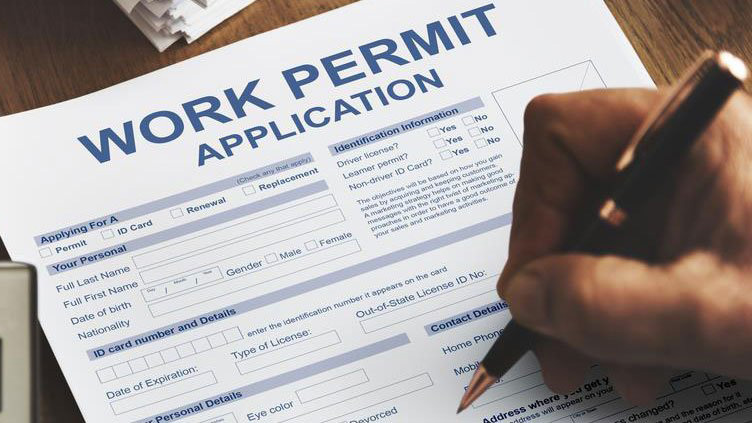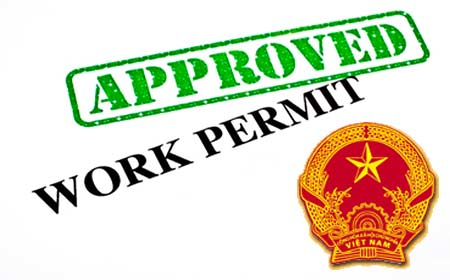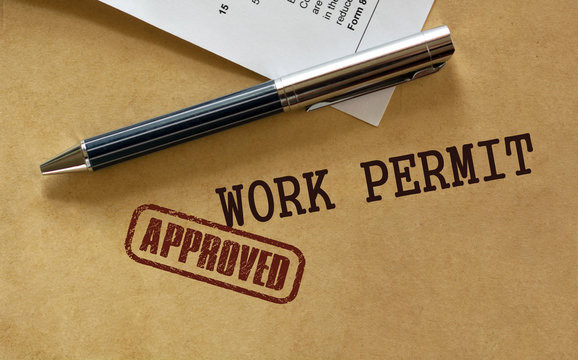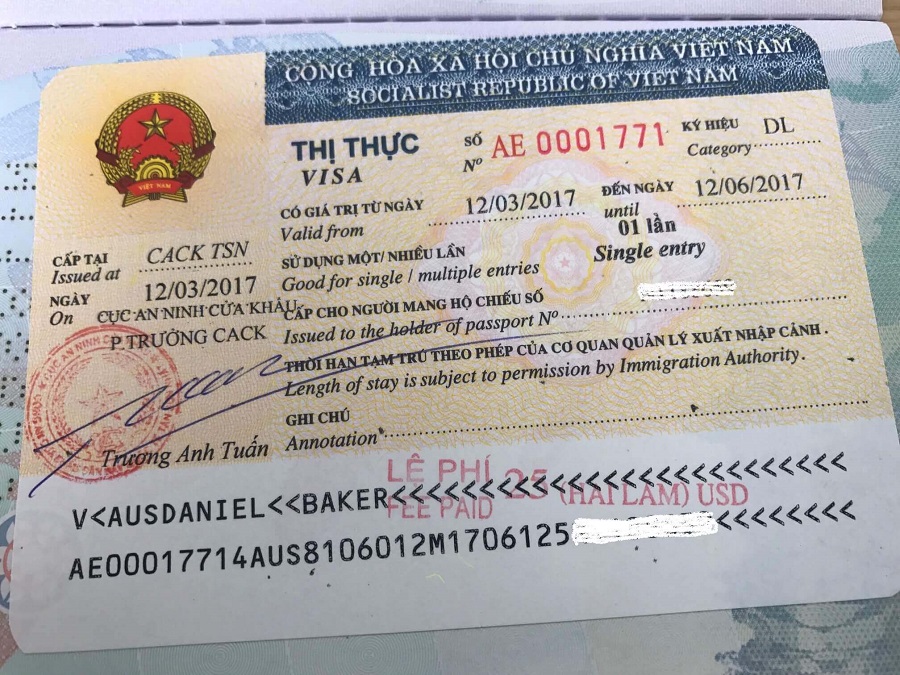The Ultimate Guide – Best Way to Secure Your Vietnam Visa on Arrival from Colombia
If you’re a Colombian citizen planning to visit the beautiful landscapes, rich culture, and delicious cuisine of Vietnam, you might be wondering about the most efficient way to secure your travel document. The best way to get Vietnam visa on arrival from Colombia is through a straightforward application process that will allow you to embark on your adventure with ease.
Introduction: Vietnam Visa on Arrival for Colombian Citizens

Vietnam has increasingly become a popular destination for travelers worldwide, including those from Colombia. With its stunning natural beauty, unique traditions, and vibrant cities, it’s no surprise that many Colombians are eager to explore this Southeast Asian gem.
To experience everything Vietnam has to offer, obtaining a visa is a necessary step in the journey. Thankfully, the Vietnam visa on arrival option provides a convenient pathway for Colombian citizens. This guide will walk you through the entire process, ensuring you have all the information needed to sail smoothly through your visa application.
Understanding Visa on Arrival: A Convenient Option for Colombians

Traveling can often require dealing with complex visa processes that may vary greatly from one country to another. However, the visa on arrival system allows travelers to obtain their entry permits conveniently upon landing in Vietnam. For Colombian citizens, understanding this process can save time and hassle.
What is Visa on Arrival?
The visa on arrival (VOA) is a service offered by the Vietnamese government that allows travelers to obtain their visa once they arrive at designated international airports in Vietnam. This method is particularly appealing because it simplifies the visa acquisition process, especially for travelers who prefer not to engage with embassies or consulates prior to departure.
Advantages of Visa on Arrival for Colombian Travelers
- Convenience: One of the most significant advantages of the VOA is that you don’t need to apply for a visa before you leave Colombia. Instead, you can complete the entire application online and simply pick it up at the airport when you land in Vietnam.
- Time-Saving: The process is streamlined. You fill out an online form and receive an approval letter via email, which you’ll present at the airport to get your visa on arrival.
- Flexibility: If you change your travel plans, adjusting your visa isn’t complicated. You can apply for a new visa based on your latest itinerary without dealing with local embassies.
Disadvantages to Consider
While the VOA offers remarkable benefits, there are some cons to keep in mind:
- Limited Entry Points: Not all airports in Vietnam allow visa on arrival; only selected international airports provide this service. Therefore, it’s crucial to plan your arrival accordingly.
- Visa Fees: While the initial application fee is often affordable, there is an additional stamping fee that needs to be paid upon arrival. This fee can vary depending on the type of visa you are applying for.
- Potential Delays: Although the process is typically quick, there could be unforeseen delays at the airport, meaning you should factor extra time into your travel plans.
Eligibility Requirements for Vietnam Visa on Arrival from Colombia

Understanding eligibility requirements is critical to successfully acquiring a visa on arrival in Vietnam. Colombian travelers can simplify their planning by ensuring they meet the necessary criteria.
Who Can Apply for Visa on Arrival?
Colombian passport holders are eligible for the VOA as long as they comply with the following basic conditions:
- Valid Passport: Your passport must be valid for at least six months beyond your planned entry date into Vietnam.
- Travel Purpose: The visa on arrival is typically issued for short-term stays for tourism or business purposes. Clearly define your travel intentions as they may be scrutinized at immigration.
- Pre-Approval Letter: Before boarding your flight, you must apply for and receive a visa approval letter from an authorized Vietnamese agency. This letter is essential for obtaining your visa upon arrival.
Specific Requirements for Colombians
- Passport Copies: You should maintain multiple copies of your passport to present during the application process both online and at the airport.
- Photograph Size Specifications: Two recent passport-sized photos (4×6 cm) are required to finalize your visa upon arrival.
- Return Flight Ticket: Immigration officials may request proof of onward travel. Therefore, having a return flight ticket is advisable.
Other Considerations
- Travel Insurance: While not a requirement, having travel insurance covering medical emergencies and trip cancellations is highly recommended for peace of mind.
- Currency Exchange: Having sufficient cash (USD or VND) to cover the visa stamp fee at the airport is essential, as some credit cards may not be accepted.
Step-by-Step Guide: Applying for a Vietnam Visa on Arrival as a Colombian
Now that we’ve clarified the requirements, let’s delve into the step-by-step process of applying for the Vietnam visa on arrival tailored specifically for Colombian citizens.
Step 1: Gather Required Information
Before starting your application, compile all the necessary data you’ll need:
- Full name (as it appears in your passport)
- Date of birth
- Nationality
- Passport number
- Passport expiration date
- Arrival date in Vietnam
- Desired length of stay
- Travel purpose
Step 2: Choose a Reliable Online Agency
Selecting a trustworthy travel agency or website that specializes in visa processing is crucial. Research options and read reviews to ensure you choose a reputable provider. Most Vietnamese visa agencies charge a nominal processing fee.
Step 3: Complete the Online Application Form
Once you’ve selected an agency, navigate to their VISA application page. Fill in the required details accurately. Double-check these details as any errors may lead to complications later.
- Personal Details: Enter your full legal name, nationality, passport number, and dates correctly.
- Travel Dates: Specify your intended arrival date and the duration of your stay in Vietnam.
Step 4: Payment of Processing Fee
After completing the application forms, you will generally be prompted to pay processing fees online. Payment methods usually include credit/debit cards or online payment services.
Step 5: Receive Your Approval Letter
Upon successful payment and submission, wait for the approval letter to arrive in your email inbox. Depending on the agency, this may take anywhere from a few hours to three business days.
- Review: Once you receive the approval letter, confirm that all details match your passport. Any discrepancies can lead to issues at immigration.
Step 6: Print the Approval Letter
Ensure you print out the approval letter. You will present this document at the airport alongside your passport and photographs when obtaining your visa on arrival.
Required Documents and Information for Your Application
Collecting the correct documents and understanding what information to provide is paramount to successfully transitioning through the visa process. Here’s what you’ll need:
Essential Documents
- Passport: A valid Colombian passport with at least six months of validity remaining.
- Visa Approval Letter: The letter received from the online agency is essential for claiming your visa on arrival.
- Passport Photos: Two identical passport-sized photos (4×6 cm) taken within the last six months.
Additional Documentation
- Proof of Accommodation: It can be beneficial to have a reservation confirmation from hotels or other accommodations handy, although it’s not always checked.
- Return Air Ticket: As mentioned earlier, be prepared to show proof of your return flight to validate your travel intent.
Special Considerations for Families
If traveling with family members, each person must hold their own passport and have individual visa approval letters. Ensure that each family member’s documentation is complete before departure.
Cost Breakdown: Fees Associated with Vietnam Visa on Arrival
Budgeting for your trip includes understanding the costs associated with obtaining a visa on arrival. Below is an overview of the expected fees.
Visa Processing Fees
The first cost incurred is the processing fee paid to the agency handling your visa application. This fee can range widely depending on the agency chosen and the type of visa requested.
- Standard Processing Fee: Expect to pay between $10 to $20 for standard processing.
Stamping Fees Upon Arrival
When you land in Vietnam, you must pay an additional stamping fee directly to the immigration officer to actually receive your visa.
- Visa Type Determines Fees:
- 1-month single entry: approximately $25
- 1-month multiple entries: around $50
- 3-month single entry: about $25
- 3-month multiple entries: roughly $100
Currency Considerations
Be aware that stamp fees are usually payable in cash. Bring US dollars or Vietnamese dong (VND) as some immigration counters may not accept credit cards.
Potential Additional Costs
Consider possible extra expenses such as transportation to your accommodation, meals, and activities. It’s wise to budget generously to ensure a smooth experience.
Common Pitfalls and How to Avoid Them: Tips for a Smooth Process
While applying for a visa on arrival can be straightforward, certain common pitfalls can complicate matters. Here are some tips to ensure a seamless process.
Inaccurate Information on Applications
One of the most frequent mistakes made by applicants is providing incorrect personal information. Each detail must match precisely with your passport.
- Tip: Don’t rush through filling out the application. Carefully review every entry for accuracy before submitting.
Ignoring the Visa Type Needed
Many travelers mistakenly assume that any visa type will suit their needs. Different types exist for tourism, business, or longer stays, and selecting the wrong category can lead to denied entry.
- Tip: Determine the appropriate visa type before applying. If unsure, consult with your chosen processing agency.
Underestimating the Time Required for Processing
Although online applications can be processed quickly, it’s not guaranteed. Waiting until the last minute can lead to stress and complications.
- Tip: Begin the visa application well in advance of your intended travel date—at least two weeks ahead.
Forgetting Necessary Documents
Arriving at the airport without the required printed approval letter or passport photos is a surefire way to create problems.
- Tip: Prepare a checklist before departing for the airport. Ensure all paperwork is packed in your carry-on luggage.
Arrival Procedures and Claiming Your Visa in Vietnam
Successfully navigating the arrival procedures is the final step in securing your visa and commencing your adventure in Vietnam.
At the Airport
Upon landing, proceed to the visa on arrival counter, which is usually located near the immigration desks.
- Present Required Documents: Hand over your printed approval letter, passport, and passport-sized photographs.
Pay the Stamping Fee
Prepare to pay the stamping fee in cash, as mentioned earlier. Make sure to have either USD or VND available.
- Maintain Order: There may be a queue, so keep the documents organized and easily accessible to expedite the process.
Receiving Your Visa
After payment, the immigration officer will affix your visa stamp onto your passport.
- Review Your Visa: Check that all details on the visa are correct before leaving the counter. Mistakes can cause issues later on.
Conclusion
In conclusion, obtaining a Vietnam visa on arrival from Colombia is a straightforward process if you follow the outlined steps and prepare adequately. By understanding the eligibility requirements, gathering the necessary documentation, and being mindful of potential pitfalls, Colombian travelers can enjoy a hassle-free entrance into this enchanting country. From the initial online application to receiving your visa upon arrival, being informed will allow you to focus on what truly matters: exploring the breathtaking sights and experiences that Vietnam has to offer.

About VISAONLINEVIETNAM – Vietnam’s Trusted Visa Service Provider
VISAONLINEVIETNAM is a leading visa service brand specializing in facilitating Vietnam visa applications for foreign travelers. Operated under VIETNAM VISA SERVICE., Co. LTD VIETNAM (License No. GP79-031/2009/TCDL), we proudly serve as the bridge between Vietnam and the world. With over 20 years of experience and more than 5 million satisfied clients worldwide, we are known for speed, transparency, and guaranteed support.
✅ Why Choose VISAONLINEVIETNAM?
- 🔒 Trusted and Transparent: Clear pricing, accurate information, and honest advice.
- 🚀 Fast Processing: Urgent visa service within 1–4 hours, even on weekends or holidays.
- 🌐 Online Application: Apply easily at VisaOnlineVietnam.com, support available 24/7.
- 📩 Visa Sent via Email: No need to visit the embassy, just print your visa and travel.
- 💼 Support for 200+ Nationalities: From tourist to business, student, or work visas.
🌍 Our Key Services
- Vietnam E-Visa (Electronic Visa)
- Processing time: 3–5 business days
- Suitable for tourist and short-term business travel
- Available to citizens of 80+ countries
- Visa on Arrival (VOA)
- Receive a pre-approval letter by email
- Collect your visa upon landing at Vietnamese airports
- Options: 1-month to 3-month validity, single or multiple entries
- Urgent Visa Services
- Processed within 1–4 hours
- Ideal for missed flights, last-minute business trips, or personal emergencies
- Available during weekends and public holidays
- Additional Travel Services:
- VIP Fast Track at Airport: Skip the immigration lines
- Airport Pickup Private Transfer
- Translation Legalization Services
- Visa Extension Support inside Vietnam
📌 Contact Information
- 🌐 Website: https://visaonlinevietnam.com
- 📧 Email: sales@visaonlinevietnam.com
- ☎️ USA Hotline: +1 (972) 666-0676
- 📱 WhatsApp: (+84) 968 18 77 18
- 🏢 US Office: 1728 Big Canyon Trail, Carrollton, TX 75007, US
💬 What Clients Say About Us
“I needed an urgent visa within 2 hours. VISAONLINEVIETNAM handled it fast and professionally. Highly trustworthy!”
— James Nguyen, USA
“Great service! I’ve already recommended them to friends traveling to Vietnam. Super easy process.”
— Maria Lopez, Spain



























